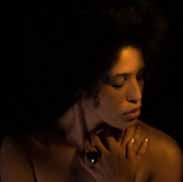pacific ap art history (khan academy) – Flashcards
Unlock all answers in this set
Unlock answersquestion
Easter Island Moai (ahu) Rapa Nui (easter island) 1100-1600 C.E
answer
Form: Volcanic tuff on basalt base Function: representation of spirit of ancestral chiefs Content: , facing inward on outside of island,(long sloping noses, strong brow bone, inset eyes, strong jaw line) carvings on backs represent different chiefs Context: the ancestors benefit humanity by representing the gods goodness,Chiefs descended from Gods, can harness the god powers to protect island as guardians
question
Nan Madol (spaces between)( modern day venice) pohnpei, micronesia saudeleur dynasty 700-1600 C.E
answer
Form: basalt boulders in slabs on coral reefs, no mortar was used( jenga like fit) Function: Capitol for important people and king, commercial center/ educational center Content: temples and housing, no sign of lever/pulley system all lifted by hand( 50 ft tall, 16 ft thick, 5 tons each) Context in the north east the rituals and ceremonies were practiced, south east was burial site, commoners would travel to nan madol and provide goods/materials to king( feudalism before european contact)
question
'Ahu "ula (feather cape) Hawaiian late 18th century
answer
Form: honeycreeper feathers and fiber function:for armor of the warriors OR to show the high rank of chiefs in community, king content: more yellow feathers+length of robe(half-body or full length) the more important the person's rank in community, pattern was never repeated by the cape makers context: status of chief/warrior valued above the ordinary citizen. Given to european explorers, who then gave to the king/queen who sponsored the trip. chief could also be a warrior so 2 were made(1>battle + !>ceremony)
question
Staff God Rarotonga, cook islands(central polynesia) late 18th century>early 19th century
early 19th century" alt="Staff God Rarotonga, cook islands(central polynesia) late 18th century>early 19th century">
answer
Form: wood tapa(bark cloth), fiber, feathers Function: protect the spirit of the Tangaroa the creator god Content: carved god on the handle, feather earring, 13ft long, broken off penis(missionaries removed and destroyed phalluses from carvings, considering them obscene) on the end that was used to be carried on a stretcher, feathers, pearl shells are woven in cloth Context: Have an explicit sexual aspect, thus embodying male and female productive and reproductive qualities. protects the ancestral power ('mana) of the deity in the barkcloth
question
female deity Nukuoro, micronesia Nukuoro people
answer
Form: wood from breadfruit tree, carved with shells or western metal blades function: Association with family group, priest or temple, harvest festivals content:Human figure with male/female features. elongated body, short legs, round head, eyes and noses are nonexistent, downward sloping shoulders context: Considered the resting place of god or deified ancestral spirit during harvest festival, placed in temples decorate with mats, feathers, paint or headdresses.
question
Buk (mask) Torres straight Mid-late 19th century
answer
Form: turtle shell,wood fiber, feathers,shell function: part of masquerade costume content: human features, hair, headpiece context: Spiritual representation of a family, totem hero or animal association, used at initiation rituals, funeral rituals, and harvest rituals. Created before Christianity was introduced to area .
question
Hiapo (tapa) Niue ( niueans) 1850-1900
answer
Form: Tapa or bark cloth, free hand painting Function: cultural exchange, special occasions such as weddings and birthdays. decorated for people of rank, protect deities, funerals Content: geometric design with human figures Context: textiles are offerings in exchange for work or food and cultural exchange. considered women's wealth and Polynesia
question
Tamati wake nene Gottfried Lindauer 1890
answer
Form:oil on canvas painted from Photos Function: honor the ancestors or leaders of the Maori community, passed down through generations of ancestors. hang in home or community center Content: Maori chief, wooden sword with feathers, traditional indigenous clothing, precious stone earring Context: European commission paintings of indigenous only in traditional clothes, Capture the traditions of tattoos and dressed of maori, allow the ancestors spirit to be captured/remembered .
question
Navigation chart Marshall Islands, Micronesia 19th to early 20th century
answer
Form would/shells function: navigation chart content: curved and straight lines in different directions indicate wave swells and patterns small shells marked islands context: Sophistication of navigators knowledge and learning techniques early cartography technique
question
Malagan display and mask New island province, Papua, new guinea 20th century
answer
Form: wood, pigment , fiber and shell function: funeral purposes content: animal and human features, mohawk, none are the same when given to the family have a " copyright" .no distinguishing features between male and female context:honor/capture a dead ancestors spirit or spirit of area in a celebration held in the town annually due to the high cost
question
Processional welcoming of Queen Elizabeth II to Tonga with tapa cloth Tonga, Central Polynesia 1953
answer
Form: bark cloth, pandnaus fiber/ hibiscus fiber mats Function: multi media performance Content: simple cloth more important/meaning Context: wedding/funeral celebrations still at the feet of Queen of Tonga



